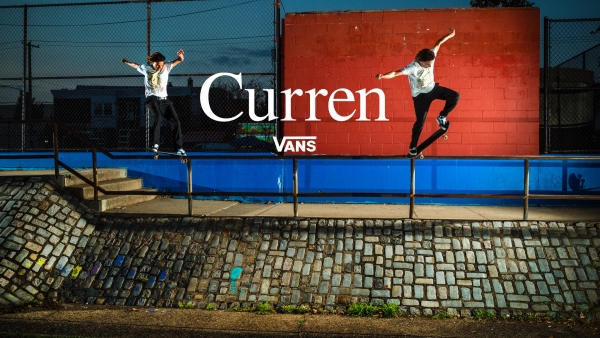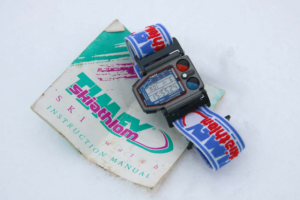In a world of ephemeral scrolls and algorithmic sameness, Curren Caples’ latest skate part arrives as a thunderclap. It’s not just a part. It’s a moment—shot across New York City’s storied stone and framed by the rhythm of a skater who’s moved beyond hype, beyond tricks-for-views, into the rare air of pure, lived-in style. This isn’t a comeback. This isn’t a flex. It’s a study in refinement, a flowing chronicle that captures Caples at his most meditative and most explosive. It’s must-see TV for those who understand the subtle poetry of street skating. It’s a cover story, a visual essay, and one of the finest compositions in his already storied catalog.
Stone, City, and Speed: A Setting with Legacy
New York City is not a forgiving backdrop. Its crusty ledges, cracked sidewalks, and traffic-pierced lines demand more than precision—they demand respect. The stone terrain of NYC, from marble ledges in Midtown to granite banks tucked beneath bridges, isn’t just a canvas. It’s a co-creator.
And Caples, true to form, doesn’t just ride the city—he listens to it.
His lines thread through traffic cones, disused benches, rusted scaffolding, and rain-slicked manholes with a kind of urban fluency few possess. There’s no performance anxiety here. There’s no overproduced cinematic trickery. The city breathes, groans, and hums beneath his wheels, and Curren lets it guide him like jazz.
At times, the footage seems to melt into the city’s texture—low angle follow-cam shots that catch not only the trick, but the flicker of neon in the puddle, the cab that almost clipped the filmer, the sound of a subway train rising from a grate. This is New York captured raw, and Curren plays lead.
The Flow: A Natural Arc of Movement
What defines Curren Caples’ skating isn’t just what he does—it’s how he does it. Where others burst, he bends. Where others punch, he glides. Curren doesn’t attack a spot. He unfolds into it.
From the opening clips, we’re met with a visual signature that’s unmistakable:
- Pushes that are half-pacing, half-floating, almost balletic in rhythm.
- No setup tricks, no filler, just a steady pace that builds like a song.
- Switch lines that don’t announce themselves—they just exist, clean and unlabored.
- Wallrides out of nowhere, quick pops over gutter gaps, ledge manuals that end in noseblunt nollies with the lightness of a feather turned sideways.
In this NYC part, Curren’s flow reaches a new form of calm. Not sleepy. Not slowed. But composed. He’s not chasing hammers anymore. He’s chasing symmetry, balance, grace.
Every move is part of a sentence. Every trick is punctuation. Every land is not a stomp—it’s a comma, a breath, a segue into the next phrase.
Iconic Spots, Rewritten Lines
To skate New York’s landmarks is to enter a centuries-old conversation, and Curren knows this. He doesn’t approach with ego. He approaches with purpose. And yet, he manages to leave his mark.
Blubba (aka the Black Hubba) – Brooklyn Banks
The once off-limits icon returns, and Curren doesn’t waste the opportunity. A switch backside smith so smooth you almost miss the speed. A fakie flip in that looks like it levitated into place. These aren’t tricks for cheers. They’re tricks for memory.
Courthouse Ledges – Lower Manhattan
This spot has been brutalized by edits for decades. Yet somehow, Curren finds a new line from the side planter to ledge, ending with a nollie 270 shove out that feels spontaneous and exact. The crowd noise? There is none. Just his breathing, the wheels, the whisper of the city taking notice.
LES Skatepark (Under the Bridge)
He treats this famed park not like a skatepark but a training ground, breaking lines mid-session, hitting ledge to rail transitions without pause, treating the space like a looped drum machine—each trick a sample, each clip part of a beat.
Trick Selection: Understatement, Redefined
What makes this part stand out isn’t that Caples is doing tricks nobody’s done. It’s that he’s doing them with an organic clarity that feels almost preordained. The standout isn’t a NBD; it’s the fact that he makes a kickflip front tail to fakie on a knee-high stone ledge look like poetry carved in real-time.
Curren’s choice of tricks speaks to his maturity:
- Manuals into wallrides, rolled so softly they feel like a feather bouncing on a drumhead.
- Late shove-its caught on the apex of an ollie, flicked like punctuation in a sonnet.
- Cab flips off angled crust, not for shock but for sentence rhythm.
This isn’t about risk. It’s about timing, geometry, and feel.
Style Notes: The Sartorial Skater
Caples’ wardrobe doesn’t shout. It whispers well-earned confidence:
- Loosely cut Dickies in stone grey.
- Vintage Nike SB dunks beaten by wear.
- White long sleeves, often rolled to the forearm.
- Occasionally, a navy Harrington jacket mid-line—flaring just enough on landings to echo the flowing motion of his ride.
Its skater meets menswear, effortless and nonchalant. He looks like he was born on these streets, not styled for them.
Visual Craft: Filming, Soundtrack, Tempo
The part’s visual tone matches Curren’s skating—a seamless blend of medium-format street documentation and kinetic vérité. The editing is light, the cuts breathing in rhythm with the lines. 16mm snippets interrupt the flow just enough to give texture, like memories spliced into motion.
The soundtrack? A soul-drenched, slowed-down track with funk undertones and lo-fi drums that rides the same line as Curren—unrushed, deliberate, grooved without trying to impress.
The filming is tight, but not showy. No drone shots. No crane work. No filters. Just fisheyes, follow cams, curb-level tracking, and one perfectly timed overhead clip as Curren floats a fakie tre over a fire hydrant, frame frozen for one split second of cinematic grace.
Cultural Placement: Beyond the Moment
Curren Caples’ NYC part isn’t a viral clip. It’s a career crystallization, a statement without the need to declare anything. It signals a shift in how parts can speak—not by shouting, but by exhaling.
It arrives in an era where skateboarding is often hyper-edited, overpackaged, and obsessed with impact. Caples answers with subtlety, with intimacy, with a commitment to the long arc of skate storytelling.
This isn’t a bid for validation. This is a reminder: some skaters write their parts in lowercase, and it’s no less powerful.
Legacy in Motion: A Skater Still Becoming
For a skater who came up young and fast—an X Games phenom, a style icon, a Vans staple—Curren Caples has never felt more himself than in this part. He’s grown into a mode of expression that requires no volume, no hashtags, no forced identity.
This part shows a man who knows what his body can say. Who knows what a city can do to rhythm. Who knows that the best tricks aren’t always the hardest—but the ones that echo.
Curren is no longer just a skater. He’s a moving poem across stone.
Flow
If this part were a composition, it would be written in soft black ink, with smudges of sweat and sunlight across the corners. It would speak of New York—not as a set of spots, but as a feeling. It would speak of flow—not as a buzzword, but as a philosophy.
Curren Caples, on iconic New York stone, in 2025, gave us more than a part.
He gave us a moment to slow down and watch something beautiful move.
And that, in skateboarding, remains the highest form of art.
No comments yet.








